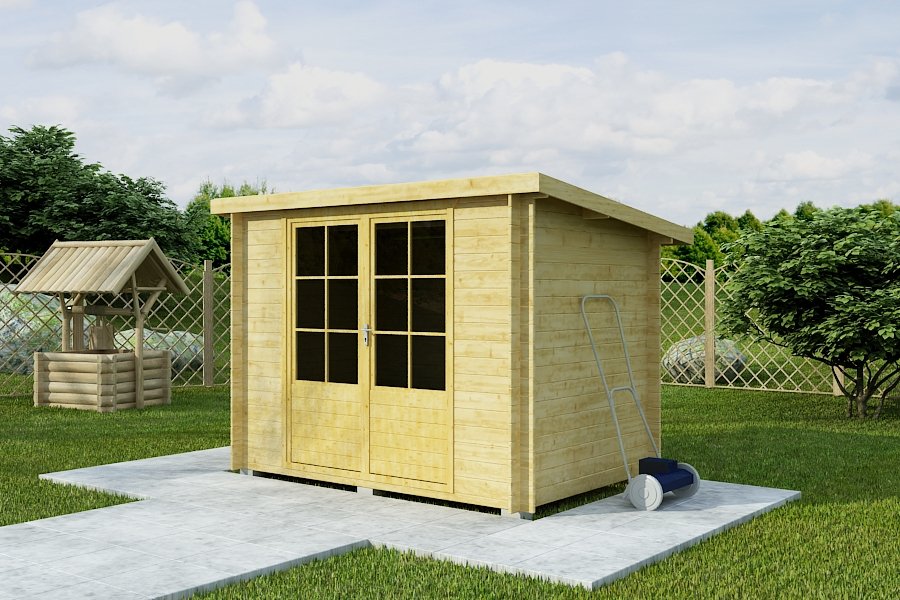
Designing Garden Buildings for Extreme Weather
Recent severe weather has demonstrated the importance of preparing gardens and buildings for extreme conditions such as wind, floods, and drought.
Prepare for natural hazards like hurricanes, snow storms and wildfires by installing windbreaks, rain gardens and grading landscapes into your garden plan. Share your adaption strategies through Gardenstead app’s community groups to join a global movement of gardeners integrating climate resilience into their gardens.
A Good Foundation
A solid foundation is key when it comes to any garden building project, and especially so when protecting against severe weather. By evaluating your site and improving soil health with sustainable strategies and plant selection, you can create an ecosystem that survives and even flourishes against Mother Nature’s challenges. Foundation plantings complement your home while adding value and beauty to outdoor spaces while acting as natural barriers against storms or extreme conditions.
A Good Roof
Weighty soil, plants and water all exert pressure on rooftop garden structures that must withstand their combined load without proper planning and reinforcement measures. Without assistance from an experienced structural engineering firm early in the design process, potential issues could develop that impede use in all seasons of year. Working closely with such experts early in design process can help identify these issues early and ensure you build something resilient enough to support all seasons’ demands.
Unlocking Seasonal Structural Design
Lightweight materials and modular systems enable rooftop gardens and green spaces to easily meet the changing demands of different seasons, adapting their structures accordingly. For instance, when temperatures dip into freezing territory structural engineers can implement features which protect structures from frost damage via insulation, windbreakers or shade structures.
Summer months require effective irrigation systems in order to sustain plant health and vitality. Drip irrigation delivers water directly to plant roots, helping structural engineers reduce waste from evaporation and runoff. Furthermore, weather monitoring technology enables optimal irrigation scheduling based on real-time temperature, humidity levels, rainfall patterns and other environmental considerations.
Seasonal considerations also involve installing efficient drainage systems to avoid build-up of water on roofs, which could occur from heavy rains or melting snow, and cause disruptions to structural integrity, plant ecosystems and quality water supply. Without adequate channeling systems in place this could threaten structural integrity as well as water quality in an ecosystem.
Furthermore, it’s essential to choose appropriate plant species for every season – selecting plants with differing tolerances to temperature changes, sunlight exposure and moisture levels is key to making sure a rooftop garden or green space thrives year-round.
A Good Wall
As climate change increases the frequency and intensity of extreme weather events, urban green infrastructure has become an integral component of city sustainability and design. Vertical gardens in urban landscapes can help mitigate their adverse effects while improving city livability – it is crucial that such systems can withstand and thrive harsh environments without suffering lasting harm; this research explores benefits associated with extreme weather resilience in vertical gardens as well as strategies and techniques used to achieve it.
Extreme weather resilience in green walls is a complex topic, but several essential considerations must be made in order to ensure their success. These factors include plant selection, installation and maintenance practices. Hardy plants that adapt well to local climatic conditions must be selected when it comes to evergreen and deciduous species being planted. In colder climates it is also crucial that species with shallow fibrous root systems can withstand thinner soil conditions.
Defensible space guidelines must also be included when designing an outdoor living wall. These recommendations generally focus on minimizing fuel (and dead plant material) in close proximity to houses while still providing canopy shielding against ember attacks and radiant energy. Further empirical and modeling research is necessary in order to identify optimal zonation around houses as well as understanding how garden structure, species composition and moisture status impact risk of ignition from embers or radiant energy.